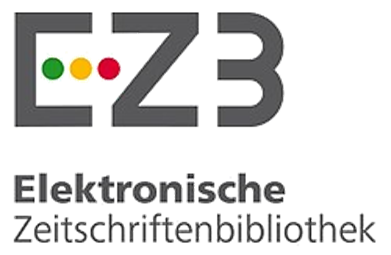Performance Enhancing Drugs and Methods of Doping: Mode of Action and Dope Testing Methodologies
DOI:
https://doi.org/10.51611/iars.irj.v13i01.2023.230Keywords:
Drug Abuse, Doping, Performance-Enhancing Drugs, Dope Testing, Sports, Sports MedicinesAbstract
World Anti-Doping Agency (WADA) monitors each sport worldwide to ensure freedom from drug abuse. Abuse of Drugs or procedures specifically which are banned by WADA to artificially enhance the efficiency of sports-person is called DOPING. The ban is imposed due to the side-effects of performance-enhancing drugs (PEDs), lack of fairness in sports, and the deterioration of sport for the public. The use of PEDs damaging the spirit of sport, and therefore banned, by WADA and the International Olympic Committee. Fair play is a prerequisite to promote clean and safe sports. Doping is the intentional use of banned PEDs by athletic competitors that may be overtly or covertly assisted by Athlete support personnel. Besides, athletes (or athletic programs) taking unambiguous actions to escape exposure make worse the fair disobedience with dishonesty and cheating. Immunoassay, Gas Chromatography-Mass Spectrometry (GC-MS), Liquid Chromatography-Mass Spectrometry (LC-MS), Isotope Ratio Mass Spectrometry (IRMS), Gel Electrophoresis, and Bio- /Chem-iluminescence technologies have been traditionally used in dope testing. There is a strong continuous requirement for further improving the quality of dope testing setups, processes, and procedures. Adoption of emerging technologies like metabolomics and the use of other omic technologies shall play a big role in continual improvements in dope testing. The present system in Doping Control is required to function in a more globally competitive, coordinated, and proactive manner. This review will outline a brief overview of the PEDs, their health impacts, history of their use, and their pharmacological impact. It also analyses comprehensive information on the Dope Testing Technologies available and in the offing.
Downloads
References
World Anti-doping Agency (WADA). Athlete Biological Passport operating guidelines, Montreal, Canada (2018). www.wada-ama.org/sites/default/files/resources/files/guidelines abp v61 2018 jul en.pdf
WADA Independent Commission Report #1. Chapter 11 (2015). http://www.wada-ama.org/sites/def ault/files/resources/files/wada independent commission report 1 en.pdf
World Anti-doping Code 2015 with 2018 Amendments(2018). https://www.wada-ama.org/sites/default/files/resources/files/wada_anti-doping_code_2018_english_final.pdf
Duntas LH, Parisis C. Doping: A challenge to the endocrinologist: A reappraisal in view of the Olympic games of 2004. Hormones 2(1), 35-42 (2003). DOI: https://doi.org/10.14310/horm.2002.1180
Aikin R, Baume N, Equey T et al., Biomarkers of doping: uses, discovery and validation. Bioanalysis. 2020;10.4155/bio-2020-0035. doi:10.4155/bio-2020-0035
Carey K. The detection of Doping in Sport and the role of Forensic Science(2018), Undergraduate Honors College Theses 2016-201. https://digitalcommons.liu.edu/post_honors_theses/19
Schumacher YO, d’Onofrio G. Scientific expertise and the Athlete Biological Passport: 3 years of experience. Clin. Chem. 58(6), 979–985 (2012). DOI: https://doi.org/10.1373/clinchem.2012.183061
Kremenik M, Onodera S, Nagao M, Yuzuki O, Yonetani S. A historical timeline of Doping in the Olympics(Part 1 1896-1968). Kawasaki Journal of Medical Welfare. 12, 19-18(2006).
Nieschlag E, Vorona E. Medical consequences of doping with anabolic androgenic steroids: effects on reproductive functions. European Journal of Endocrinology. 173, 47-58(2015). DOI: https://doi.org/10.1530/EJE-15-0080
Nieschlag E &Nieschlag S. Testosterone deficiency: a historical perspective. Asian Journal of Andrology 16, 161–168(2014). DOI: https://doi.org/10.4103/1008-682X.122358
Dirix A. The doping problem at the Tokyo and Mexico City Olympics Games. Journal of Sports Medicine and Physical fitness 6, ….-185(1966).
Holt RIG, Erotokritou-Mulligan I, Sonksen PH. The history of doping and growth hormone abuse in sport. GrowthHarmone and IGF research. 19, 320-326 (2009). DOI: https://doi.org/10.1016/j.ghir.2009.04.009
Lee Yu-H. Performance Enhancing Drugs:History, Medical Effects & Policy. http://nrs.harvard.edu/urn-3:HUL.InstRepos:8848241
The World Anti-Doping Code International Standard Prohibited List (2020) https://www.wada-ama.org/en/resources/science-medicine/prohibited-list-documents
Baron DA, Martin DM, Abol Magd S. Doping in sports and its spread to at-risk populations: an international review. World Psychiatry. 6(2 ),118–123(2007).
Pope HG, Jr.,Wood RI, Rogol A, et al. Adverse Health Consequences of Performance-Enhancing Drugs: An Endocrine Society Scientific Statement. Endocr Rev. 35(3), 341–375, (2014). DOI: https://doi.org/10.1210/er.2013-1058
Solomon ZJ, Mirabal JR, Mazur DJ et al. Selective Androgen Receptor Modulators (SARMs) - Current Knowledge and Clinical Applications. Sex Med Rev. 7(1), 84–94 (2019). DOI: https://doi.org/10.1016/j.sxmr.2018.09.006
Burniston JG, WA C, Tan LB, et al. Dose-dependent separation of the hypertrophic and myotoxic effects of the β2-adrenergic receptor agonist clenbuterol in rat striated muscles. Muscle Nerve. 33(5), 655–663(2006). DOI: https://doi.org/10.1002/mus.20504
Kelland K. Substances and methods used in doping (2012). https://www.reuters.com/article/us-oly-dop-day1/substances-and-methods-used-in-doping-idUSBRE86R0DA20120728.
Billington CK, Penn RB, Hall IP. β2-agonists. Handb Exp Pharmacol. 237: 23–40(2017). DOI: https://doi.org/10.1007/164_2016_64
Daubert GP, Mabasa VH, Leung VWY et al. Acute clenbuterol overdose resulting in supraventricular tachycardia and atrial fibrillation. J Medical Toxicol: official journal of the American College of Medical Toxicology 3(2), 56-60(2007). DOI: https://doi.org/10.1007/BF03160909
Home P, Riddle M, Cefalu WT, et al. Insulin Therapy in People With Type 2 Diabetes: Opportunities and Challenges? Diabetes Care. 37(6), 1499–1508 (2014). DOI: https://doi.org/10.2337/dc13-2743
Cadwallader AB, Torre X de la, Tieri A, et. The abuse of Diuretics as performance enhancing drugs and masking agents in sport doping: pharmacology, toxicology and analysis. British Journal of Pharmacology 161, 1–16(2010).
Avois L, Robinson N, Saudan C, et al. Central nervous system stimulants and sport practice. Br J Sports Med. 40(1), 16–20, (2006). DOI: https://doi.org/10.1136/bjsm.2006.027557
Huestis MA, Mazzoni I, Rabin O. Cannabis in Sport Anti-Doping Perspective. Sports Med. 41(11), 949–966(2011). DOI: https://doi.org/10.2165/11591430-000000000-00000
Dezsi CA and Szentes V. The Real Role of β-Blockers in Daily Cardiovascular Therapy. Am J Cardiovasc Drugs. 17(5), 361–373,(2017). DOI: https://doi.org/10.1007/s40256-017-0221-8
Harrison CR. Role of Capillary Electrophoresis in the Fight against Doping in Sports. Anal. Chem. 85, 6982−6987,(2013). DOI: https://doi.org/10.1021/ac302821x
Bowers LD. Analytical advances in detection of performance enhancing compounds. Clin. Chem. 43(7), 1299-1304,(1997). DOI: https://doi.org/10.1093/clinchem/43.7.1299
Jan N, Marclay F, Schmutz N. Use of Forensic investigation in Anti-Doping. Forensic Sci Int.213, 109-113, 2011. DOI: https://doi.org/10.1016/j.forsciint.2011.07.037
Botre F. Mass spectrometry and illicit drug testing: analytical challenges of the anti-doping laboratories. Expert. Rev. Proteopmics. 5(4), 535-539(2008). DOI: https://doi.org/10.1586/14789450.5.4.535
Geyer H, Shanzer W, Thevis M. Anabolic agents: recent strategies for their detection and protection from inadvertent doping. Br J Sports Med. 48,820–826(2014). DOI: https://doi.org/10.1136/bjsports-2014-093526
Anderson JM. Evaluating the Athlete’s Claim of an Unintentional Positive Urine Drug Test. Curr Sports Med Rep. 10(4), 191-196,(2011). DOI: https://doi.org/10.1249/JSR.0b013e318224575f
Cawley AT, Hine ER, Trout GJ, et al. Searching for new marker of endogenous steroid administration in athletes: “looking outside the metabolic box”. Forensic Sci. Intern. 143, 103-114(2004). DOI: https://doi.org/10.1016/j.forsciint.2004.02.031
Flenker U, Guentner U, Schaenzer W. δ13 C-values of endogenous urinary steroids. Steroids. 73, 408-416(2008). DOI: https://doi.org/10.1016/j.steroids.2007.11.007
Kioussi MK, Lyris E, Angelis YS, et al. A generic screening methodology for horse doping control by LC-TOF-MS, GC-HRMS and GC-MS. J Chromat.B. 941, 69-80, (2013). DOI: https://doi.org/10.1016/j.jchromb.2013.10.008
Saugy M, Robinson N, Saudan C. Human growth hormone doping in sport. British J Sports Med. 40(1), 35-39, (2006). DOI: https://doi.org/10.1136/bjsm.2006.027573
Thevis M, Thomas A, Schanzer W. Detecting peptidic drugs, drug candidates and analogs in sports doping: current status and future directions. Expert Rev Proteomics. 11(6), 663-673, (2014). DOI: https://doi.org/10.1586/14789450.2014.965159
Bidlingmaier M,Wu Z, Strasburger CJ. Problems With GH Doping in Sports. J Endocrinol Invest. 26(9),924-931, (2003). DOI: https://doi.org/10.1007/BF03345245
He C, Wu M. Detection of doping with recombinant human growth hormone. Bioanalysis. 1(5):953‐965(2009). DOI: https://doi.org/10.4155/bio.09.85
Hackney AC. Chapter 6 - Beta-2 Agonists. Doping, Performance Enhancing Drugs, and Hormones in Sport. Mechanisms of Action and Methods of Detection Emerging Issues in Analytical Chemistry. 65-76(2018). DOI: https://doi.org/10.1016/B978-0-12-813442-9.00006-7
Pleadin J, Gojmerac T, Lipej Z, et al. Accumulation of the beta(2)-adrenergic Agonist Clenbuterol in Mouse Dark Hair. Arch Toxicol. 83(11),979-983,(2009). DOI: https://doi.org/10.1007/s00204-009-0446-7
Kintz P, Dumestre-Toulet V, Jamey C, et al. Doping Control for Beta-Adrenergic Compounds Through Hair Analysis. J Forensic Sci. 45(1),170-174,(2000). DOI: https://doi.org/10.1520/JFS14654J
Di Corcia D, Morra V, Pazzi M, Vincenti M. Simultaneous determination of beta2-agonists in human urine by fast-gas chromatography/mass spectrometry: method validation and clinical application. Biomed Chromatogr. 24(4),358‐366,(2010). DOI: https://doi.org/10.1002/bmc.1300
Thevis M and Schanzer W. Examples of Doping control analysis by liquid chromatography-Tandem mass spectrometry: Ephedrines, β-receptor blocking agents, Diuretics, Sympathomimetics, and Cross-linked Hemoglobins. J Chromatographic Sci. 43, 22-31, (2005). DOI: https://doi.org/10.1093/chromsci/43.1.22
Cadwallader AB, de la Torre X, Tieri A, et al. The abuse of Diuretics as performance enhancing drugs and masking agents in sport doping:pharmacology, toxicology and analysis. British Journal of Pharmacology, 161, 1–16, (2010). DOI: https://doi.org/10.1111/j.1476-5381.2010.00789.x
Jelkmann W and Lundby C. Blood doping and its detection. Blood. 118 (9), 2395–2404, (2011). DOI: https://doi.org/10.1182/blood-2011-02-303271
Segura J, Lundby C. Blood doping: potential of blood and urine sampling to detect autologous transfusion. British Journal of Sports Medicine 48,837-841(2014). DOI: https://doi.org/10.1136/bjsports-2014-093601
Marrocco C, Pallotta V, D'alessandro A, et al. Red blood cell populations and membrane levels of peroxiredoxin 2 as candidate biomarkers to reveal blood doping. Blood Transfus. 10 (2),71-77, (2012).
Pottgiesser T, Schumacher YO. Current strategies of blood doping detection. Anal Bioanal Chem. 405(30),9625‐9639,(2013). DOI: https://doi.org/10.1007/s00216-013-7270-x
Kor DJ, M Van Buskirk C, Gajic O. Red Blood Cell Storage Lesion. Bosn J Basic Med Sci. 9(1), 21–27, (2009). DOI: https://doi.org/10.17305/bjbms.2009.2750
Segura J, Monfort N, Ventura R. Detection methods for autologous blood doping. Drug Test Anal. 4(11),876‐881(2012). DOI: https://doi.org/10.1002/dta.405
Ahrens BD, Kucherova Y, Butch AW. Detection of Stimulants and Narcotics by Liquid Chromatography-Tandem Mass Spectrometry and Gas Chromatography-Mass Spectrometry for Sports Doping Control. Methods Mol Biol. 1383(10), 247-263(2016). DOI: https://doi.org/10.1007/978-1-4939-3252-8_26
Protti M, Rudge J, Sberna AE, Gerra G, Mercolini L. Dried haematic microsamples and LC–MS/MS for the analysis of natural and synthetic cannabinoids. J. Chromatogr. B Analyt. Technol. Biomed. Life Sci. 1044(1045), 77–86 (2017). DOI: https://doi.org/10.1016/j.jchromb.2016.12.038
Tiscione NB, Miller R, Shan X, et al. An Efficient, Robust Method for the Determination of Cannabinoids in Whole Blood by LC–MS-MS. J Analyt Toxicol 40(8), 639-648(2016). DOI: https://doi.org/10.1093/jat/bkw063
Methlie P, Hustad SS, Kellmann R, et al. Multisteroid LC-MS/MS assay for glucocorticoids and androgens, and its application in Addison's disease. Endocr Connect. 2013;2(3):125-136. doi:10.1530/EC-13-0023 DOI: https://doi.org/10.1530/EC-13-0023
Amendola L, Molaioni F, Botrè F. Detection of beta-blockers in human urine by GC-MS-MS-EI: perspectives for the antidoping control. J Pharm Biomed Anal. 23(1),211-221(2000). DOI: https://doi.org/10.1016/S0731-7085(00)00271-5
Protti M, Mandrioli R, Mercolini L. Perspectives and strategies for anti-doping analysis. Bioanalysis. 11(03)149-152(2019). DOI: https://doi.org/10.4155/bio-2018-0290
Outram SM, Stewart B. Condemning and condoning: elite amateur cyclists’ perspectives on drug use and professional cycling. Int. J. Drug Policy 26(7), 682–687 (2015). DOI: https://doi.org/10.1016/j.drugpo.2015.01.007
Aikin R, Baume N, Equey T, et al. Biomarkers of doping: uses, discovery and validation. Bioanalysis. 12(11) 791-800(2020). DOI: https://doi.org/10.4155/bio-2020-0035
de Albuquerque Cavalcanti G, Rodrigues LM, dos Santos L et al. Non-targeted acquisition strategy for screening doping compounds based on GC-EI-hybrid quadrupole-Orbitrap mass spectrometry: a focus on exogenous anabolic steroids. Drug Test. Anal. 10(3), 507–517 (2018). DOI: https://doi.org/10.1002/dta.2227
Haller DL, Acosta MC, Lewis D, et al. Hair Analysis Versus Conventional Methods of Drug Testing in Substance Abusers Seeking Organ Transplantation. Am J Transplant. 10(10), 1305-1311(2010). DOI: https://doi.org/10.1111/j.1600-6143.2010.03090.x
Boye E, Skotland T, Østerud B, Nissen-Meyer J. Doping and drug testing: Anti-doping work must be transparent and adhere to good scientific practices to ensure public trust. EMBO Rep.18(3),351-354 (2017). DOI: https://doi.org/10.15252/embr.201643540
Sharma B. A Critical Analysis of the Impact of Doping in Sports Domain International Journal of Law Management & Humanities. 4(2), 129-152 (2021)
Downloads
Published
Issue
Section
License
Copyright (c) 2023 Ankita Singh Chakotiya, R.K. Sharma

This work is licensed under a Creative Commons Attribution 4.0 International License.
Author(s) hold complete right on the content of this article. Copyright to the content are governed as per Copyright Policy of the Journal.




















